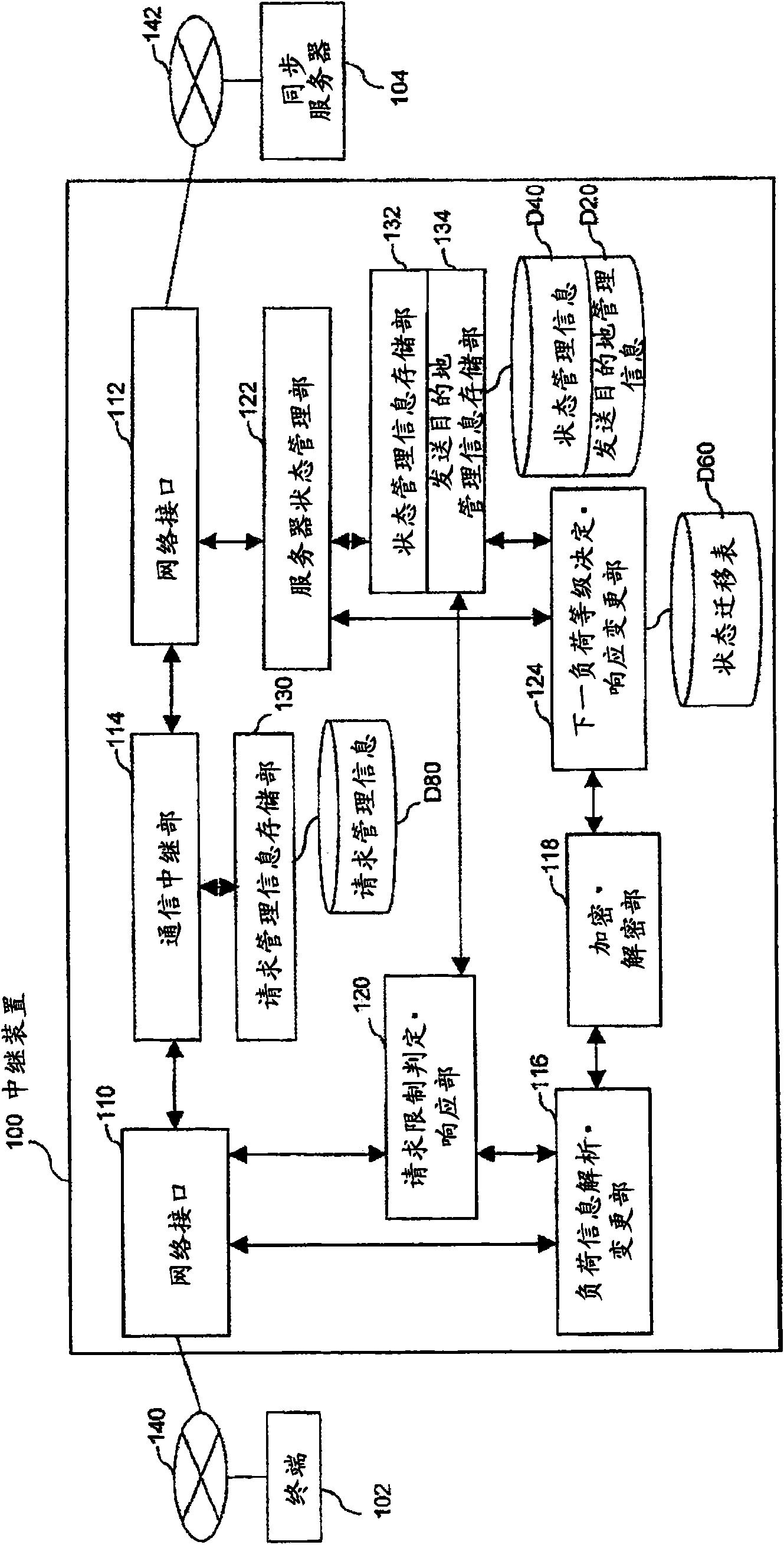Congestion control system
A technology of control device and limiting part, which is applied in program control design, transmission system, telephone communication, etc. It can solve the problems of high load of blocking control function and inability to provide blocking control function, etc., and achieve the effect of high-speed data synchronous processing
- Summary
- Abstract
- Description
- Claims
- Application Information
AI Technical Summary
Problems solved by technology
Method used
Image
Examples
Embodiment 2
[0091] The second embodiment is such an embodiment: that is, when the congestion control device, that is, the relay device, restricts the relay of the request according to the load level included in the request from the terminal 102, the next request from the terminal 102 Load rating reduced.
[0092] Figure 14 A configuration example of the communication system of the second embodiment is shown. The relay device 100 -B includes a response URI creation unit 128 that creates a response URI to be used in the request URI of the next request from the terminal 102 . Other configurations are the same as those of the relay device 100 of the first embodiment. The same applies to the point that the processor 501 executes a program, cooperates with each device as necessary, and realizes each processing unit at the same time.
[0093] The flowchart showing the detailed operation when the relay device 100-B of the second embodiment receives a request from the terminal 102 is similar t...
Embodiment 3
[0098] The third embodiment is an embodiment in which HTTP cookies are used in the exchange of load information between the terminal 102 and the relay device 100, which is the congestion control device, and the relay of requests is restricted using the load information.
[0099] Figure 16A configuration example of the communication system of the third embodiment is shown. The relay device 100-C includes: a Cookie analysis / deletion unit 136 that analyzes and deletes the HTTP header field "Cookie" included in the request from the terminal 102; In response, the next load level determination / cookie addition unit 138 adds information on the load level as the HTTP header field "Set-Cookie". Other configurations may be the same as those of the relay device 100 according to the first embodiment. The same applies to the point that the processor 501 executes a program, cooperates with each device as necessary, and realizes each processing unit at the same time.
[0100] Figure 17 ...
Embodiment 4
[0106] The fourth embodiment is an embodiment in which the relay device 100 which is the congestion control device delays the relay of the request to the server device for a certain period of time according to the value of load information included in the request from the terminal 102 . In this embodiment, since the relaying of the request is not rejected, no restriction response is returned.
[0107] Figure 18 A configuration example of the communication system of the fourth embodiment is shown. The relay device 100-D includes a relay delay unit 150 that holds the relay of the request to the synchronization server 104 for a certain period of time. Other configurations are the same as those of the relay device 100 of the first embodiment. In addition, the same applies to the point that the processor 501 executes a program, cooperates with each device as necessary, and realizes each processing unit at the same time.
[0108] The flowchart showing the detailed operation when...
PUM
 Login to View More
Login to View More Abstract
Description
Claims
Application Information
 Login to View More
Login to View More - R&D
- Intellectual Property
- Life Sciences
- Materials
- Tech Scout
- Unparalleled Data Quality
- Higher Quality Content
- 60% Fewer Hallucinations
Browse by: Latest US Patents, China's latest patents, Technical Efficacy Thesaurus, Application Domain, Technology Topic, Popular Technical Reports.
© 2025 PatSnap. All rights reserved.Legal|Privacy policy|Modern Slavery Act Transparency Statement|Sitemap|About US| Contact US: help@patsnap.com



